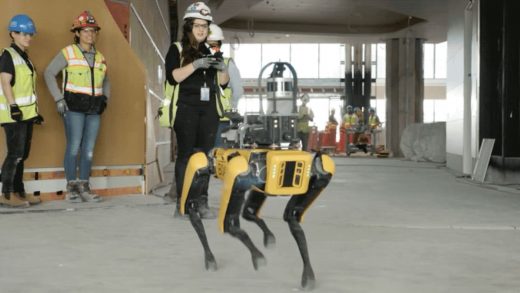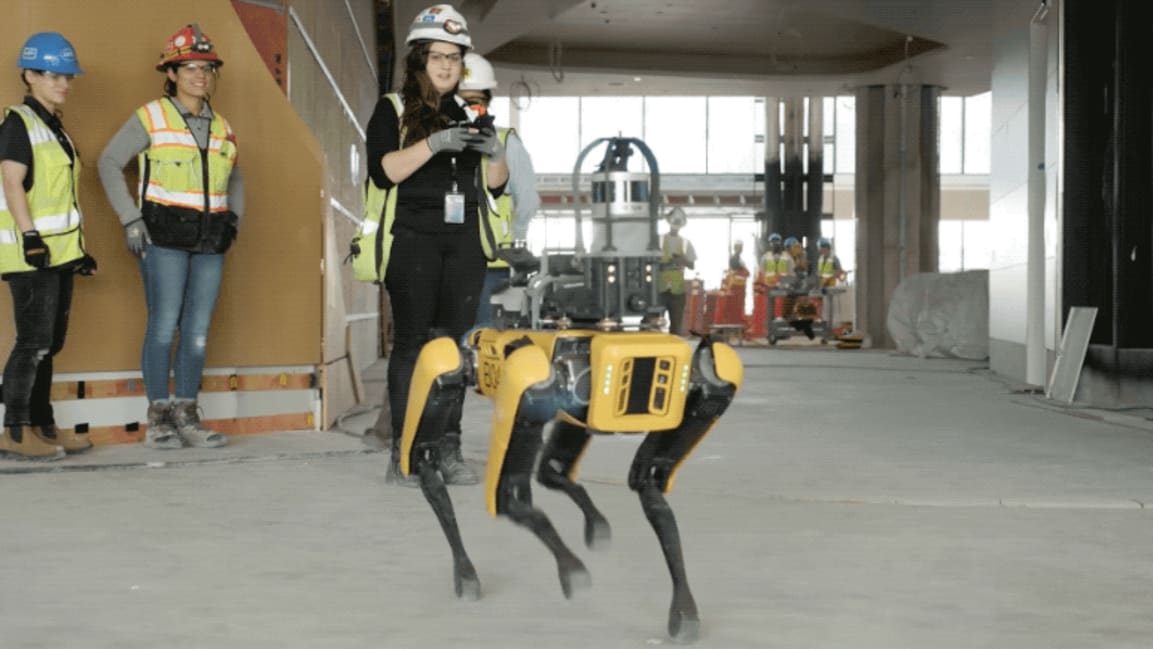The robotic pooch from Boston Dynamics’ viral videos is ready for real work
For years, people have joked that Boston Dynamics is more a maker of viral videos than of robots. The company has dazzled (and sometimes creeped out) the internet with clips of its robotic dog Spot walking, climbing stairs, jumping, dancing, and gyrating—but not doing any real work.
In September, though, the company (which was previously part of Google) started leasing Spots to companies that want to put it to work, at least in pilot projects. (It reportedly plans to build 1,000 Spots for customers by mid-2020.) The first to debut a full application using Spot is a German-American firm called HoloBuilder. It’s equipped the robot to regularly walk large construction sites, collecting 360-degree images, a la Google Street View, so engineers can track the progress of work.
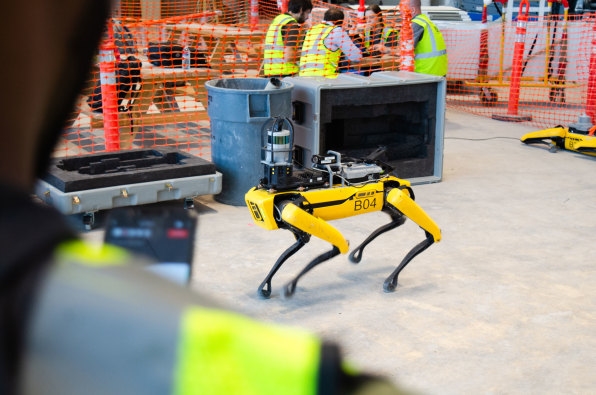
[Photo: courtesy of HoloBuilder]
Spot got its first assignment, fittingly, in the Silicon Valley area—surveying construction of the new Harvey Milk Terminal 1 at San Francisco International Airport (SFO). HoloBuilder and construction firm Hensel Phelps ran multi-week pilot tests in the spring and fall in which Spot briefly took over the painstaking site surveying job that human field engineers normally do with handheld 360-degree cameras and HoloBuilder’s Reality Capture Platform software. “[It’s] about freeing their time up to do something that is less repetitive,” says HoloBuilder’s CMO Christian Claus.
The company announced the SFO project and plans for future tests of the system, called SpotWalk, today at the Autodesk University conference in Las Vegas. While HoloBuilder is the furthest along, it isn’t the only company that aims to employ Spot in the building industry, and Boston Dynamics sees construction surveying as one of the key markets for Spot.
Robo-dog training
Boston Dynamics’s viral videos lost some of their shine when it turned out that Spot was not navigating around spaces based on its own intelligence but rather was being carefully remote-controlled from offscreen. Once Spot has been steered through a route, however, it can use its sensors and autonomous technology to retrace its steps, avoiding obstacles that may pop up along the way.
So with SpotWalk, engineers first drive the dog by remote control through an entire construction site, using HoloBuilder’s smartphone app. That allows Spot to build a digital map that it uses to roam on its own in the future. “Like a normal dog, you’d go and train it one time to say, that’s the thing you should do,” says HoloBuilder founder and CEO Mostafa Akbari-Hochberg.
HoloBuilder syncs Spot’s map with its own digital maps used to track construction site progress. That allows engineers to specify a list of locations where the robot will stop and snap new images once or twice each day. (Humans only have time to do it about once a week.) “You can see what happened in one location from one moment to the next so you can then manage [the work],” says Claus. “You can travel back and forth in time to see what the progress is.”
While Spot was learning how to navigate around the construction site, its human coworkers learned to navigate around Spot. “I think we had [confidence] that the technology works, but the [challenge] on a real-world job site is to see how people react to it,” says Akbari-Hochberg, who claims workers got used to Spot in a couple days. “It’s not anymore special after a while,” he says.
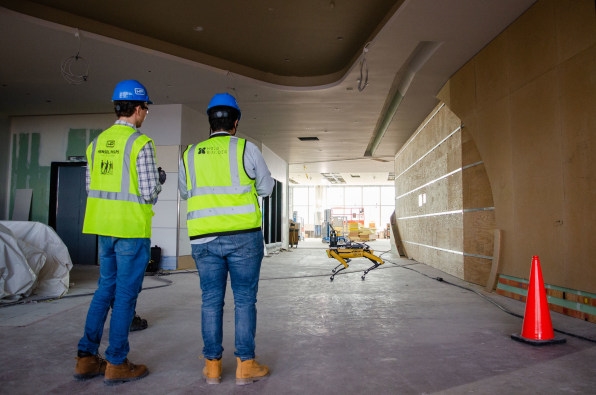
[Photo: courtesy of HoloBuilder]
He jokes that workers weren’t traumatized by a terrifying episode of dystopian sci-fi show Black Mirror, featuring killer robot dogs inspired by Spot. One of many differences: the Black Mirror dogs could run, whereas Spot only trots about as fast as an ambling human. Also, Spot isn’t equipped with weapons and programmed to kill all humans.
Future gigs
HoloBuilder and Boston Dynamics will now expand SpotWalk to new tests over the coming six months with “our most innovative customers that give us direct feedback on early developments of ours,” says Claus.
Since its founding at the start of 2016, HoloBuilder has worked with about 2,000 construction firms on about 18,000 projects. Many are giant construction projects, done by companies such as Hensel Phelps (on the SFO job), Bechtel, and Skanska.
SpotWalk is not a one-stop solution, though. Construction companies have to arrange with Boston Dynamics to lease the robot. Then they coordinate with HoloBuilder for the software and service.
Whether using humans or robots, HoloBuilder does more than collect and organize the 360-degree images they shoot. It also employs machine vision AI to make sense of them. “We now have the largest set of construction imagery, which we can now analyze and understand what drywall is, what concrete beams are, where a concrete column is,” says Akbari-Hochberg. The software can recognize the installation of drywall panels, for instance, to report progress on that phase of the work.
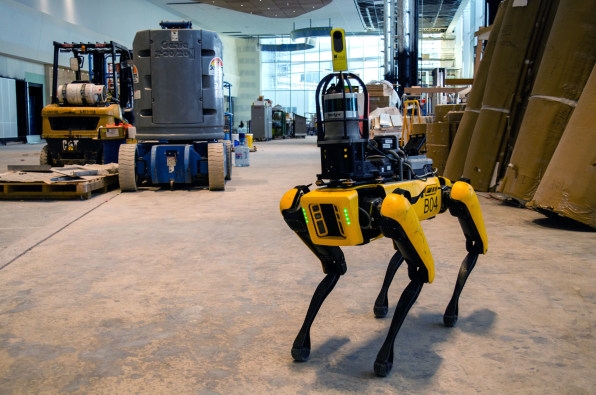
[Photo: courtesy of HoloBuilder]
Seeing Spot trot around a busy construction site with lifelike agility is awe-inspiring, but a closer look shows how far the tech is from sci-fi. Spot only ventures where it’s been carefully instructed to go. It’s not making any decisions on its own, other than how to avoid a crash. And it’s certainly not ready to start hammering or welding. By taking on one of the dullest tasks on a construction project, the bot shows promise—but there’s no sign yet it will put any humans out of work.
(48)

